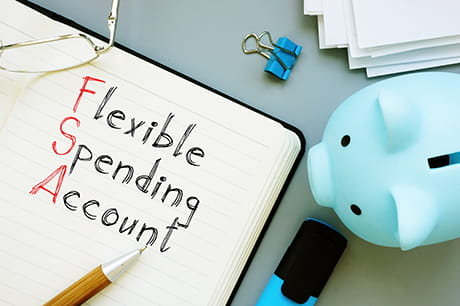What is a flexible spending account?
Plus, tips for making the most of your FSA.
From stocking up on bandages to buying new glasses, flexible spending accounts can help you manage your money and medical needs.
What is flex spending?
A flexible spending account, also called an FSA, can be used for qualified medical expenses.
“It’s an employer-sponsored account that lets members of health insurance plans set aside a certain amount of pretax money each year for medical expenses,” says Stacy Kreller, senior director of client services at Geisinger Health Plan.
The maximum for an FSA account is $2,850, but employers can set a lower limit if they choose. When limits are raised, employers also need to elect to raise their employee maximum, if they choose to do so. And not every employer offers FSAs, so check with your HR department to learn if they’re available to you.
If you set up an FSA, you’ll get a card with the total you choose at the beginning of your plan year and your total election is available to use immediately. But you don’t pay it all upfront — the total is broken up and will be taken out of your paychecks pre-tax throughout the year.
This tax-free fund account can help you save money and cover expenses for your personal medical needs for things you otherwise would have paid for out-of-pocket. The only catch? A flexible spending account must be used within the health plan year. Typically, if you miss the deadline for spending your FSA money, you lose the balance.
“Some employers may choose to offer one of two extensions: a grace period for spending the balance or the option to roll over some of the money,” says Mrs. Kreller.
If your employer offers a grace period, it can extend your spending time by two and a half months after the end of your plan year. And if you have the option of a roll over, that can allow you to move up to $570 into your account for the following year.
“Make sure you ask your employer’s HR department if these are options for you so you can better plan for the year ahead,” says Mrs. Kreller.
What can you spend it on?
The list of what you can use your FSA funds for continues to grow, but it can help you cover medical expenses including:
- Doctor visit copays
- Specialist copays
- Contact lenses
- Eyeglasses
- Dental expense
- Prescriptions
- Over-the-counter medicine
- First aid supplies
- Menstrual care products
- Medical diagnostic products
Flex spending shopping list
Headed to a local store or pharmacy to buy some essential healthcare products with your FSA card? This handy checklist, broken into categories, will help you get started:
First aid products
Get your household (or car) first aid kit up to date by using your FSA to buy:
- Bandages
- Adhesive cloth tape
- Sterile gauze pads
- Antacids
- Antibiotic ointment
- Hydrocortisone cream
- Complete first aid kits
Parent and baby products
Congratulations! Whether you’re getting ready to become a parent or have already welcomed your baby home, these are some of the products covered by FSAs:
- Nursing and formula products
- Thermometers
- Baby monitors
- Pregnancy tests
- Baby skin care products
- Prenatal vitamins
- Children’s medication (like Tylenol® and Benadryl®)
Over-the-counter medications and products
Stock your medicine cabinet with these FSA-eligible necessities:
- Pain relievers (like Tylenol® or Advil®)
- Sunscreen
- Eye drops
- Epsom salt
- Allergy relief medication
- Cough and cold medication
Health and hygiene products
Need a new nightguard? FSAs cover that and more, including:
- Menstrual pads, tampons, cups, discs and underwear
- Reading glasses
- Oximeters
- Nebulizers
- Steam inhalers
- Hearing aids
- Nightguards
- Lotion
If you’re not sure whether a flexible spending account is right for you, consider signing up for a lower amount than the max allowed. Keep track of what you buy throughout the year and, the next time enrollment comes around, you’ll have an idea of how much you should sign up for.
“You can also visit the FSA store at any time to browse what you can buy with a flexible spending account,” says Mrs. Kreller. “This is also a great way to use up any ending balance at the end of the year.”
Next steps:
5 wellness programs for a healthy life
Health coaching: What is it — and who can benefit from it?





